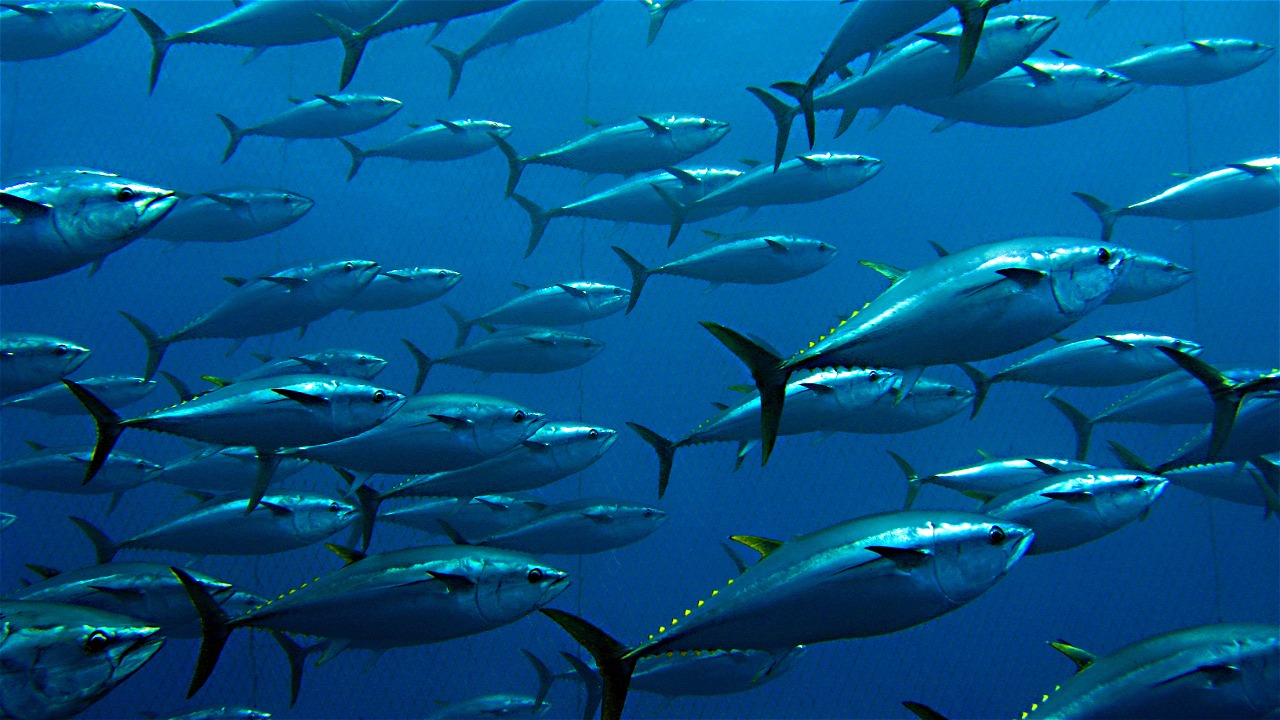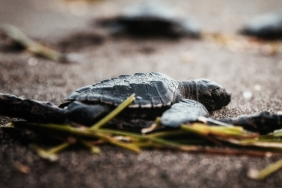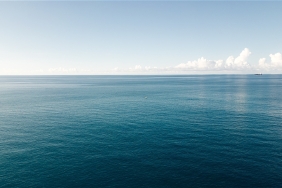YOUNG ONES LOOKING FOR TUNA
Author: Maskur Tamanyira (Capture Fisheries Officer WWF-Indonesia)
Worrying that I would be left behind at sea, I hurried at 06.00 in the morning to the house of Mr. Kader, a tuna fisherman in Balauring, Lembata Regency, East Nusa Tenggara. Upon arrival, I was greeted by Mr. Kader, who, covered in a sarong, instructed me to go straight to the back (where the boat was docked). As we walked together, he said "I'm not coming down today, I'm not feeling well. You can come with my nephews, they are also used to fishing.".
Behind the house I immediately helped Mr. Kader's two nephews who were going fishing today prepare their supplies and equipment. At around 6:15am, we officially leave Balauring Bay. Accompanied by the beautiful scenery of Tanjung Baja and Tanjung Lohu, I get to know these young fishermen. The first young fisherman, Revin is 20 years old, and Skin, 23 years old. "I do the fishing" said Revin in between introductions, "Skin just helps" he added with a smile on his face. Hearing this, I was a little dubious as to whether these young fishermen could put on a show catching big tuna.
Flying fish pretending to be alive
Leaving Tanjung Lohu, we headed off the coast of Kalikur to buy flying fish to use as bait. Dead flying fish are modified to look alive by putting weights (nails) in the fish's mouth and then having their wings sewn on so that they expand. "Interesting" I thought. Once the fishing gear was ready to use, the boat began to run at a slow pace and tried to move in front of the hordes of dolphins.< br />
While holding the "tool of war", Revin controlled the rudder using his feet to guess the direction and movement of the dolphin pod. Immediately Revin took a position in front of the marine mammals while saying "To intercept the carp tuna" Revin said as if he knew my confusion. "In front of the dolphin swarm, there are usually big skipjack, tuna and tuna, they are both looking for small fish. That's why I try to take a position in front of this because tuna move faster than dolphins (they call them that) and then I release the bait and try to play with it" (by pulling and jerking the fishing line, so that the flying fish bait comes alive by jumping on the surface of the water). This is called the instinct needed to find fish.
In less than 20 minutes of playing with the strings, Revin's bait was snatched. From the back of the boat he moved quickly to the front, while Skin helped reel in the strings that were unraveling due to Revin's struggle to pull in the fish. 15 minutes later the shadow of the fish was visible, the yellowfin tuna (Thunnus albacares) began to appear bigger and bigger. This was the first time I saw a fisherman fishing for tuna! "Ah this is small mas, only 40 kilos at most" said Revin to my amazement. While pulling and holding the fish near the surface of the water, he continued to tell me "I once got 80 kilos mas". My initial suspicion was not proven at all, these two youngsters are good at catching big tuna!
Upon the fish's arrival at the surface, Revin aimed at the spear held by Skin. When the fish was confirmed to be motionless, the fish was brought on board, then the head was hit again to make sure it was really dead, until it was then put into a hatch filled with ice.
Kite Fishing
This time Skin did the driving and Revin set up the kite fishing. This was new to me again! The construction of this fishing tool is an ordinary kite connected with fishing strings. At certain lengths, additional strings are also tied for bait. Artificial squid was the bait set up on this hunt.
Kite fishing also utilizes schools of dolphins to catch fish. The kite serves to keep the bait completely on the surface of the water so that when pulled by the angler, the bait moves jumping like a live fish jumping to avoid predators. The boat driven by Skin (and directed by Revin) moves in circles looking for schools of dolphins, moving around the mouth of Balauring Bay, from the direction of Tanjung Baja, to Tanjung Lohu.
The clock struck 2:45 p.m. and the kite had yet to show any results. "Tomorrow afternoon a little more dolphin fish, that's for sure we get lag fishi" said Revin confidently. For almost 2 hours we all waited, Skin who was in control of the boat had started to look bored, occasionally he yawned.
The time came for the pod of dolphins to appear. The pace of the boat was directed to the front of the pod about 10m from the end of the pod. While enjoying the pace of the boat, at the front, Revin played the kite. Seeing that the bait had not been taken, the speed of the boat was increased and when Skin was about to move the boat faster, Revin just stomped his feet to make the boat stop, he even shouted at Skin to tell him that the bait was eaten.
Seeing this, Skin swiftly turned off the ship's engine and drove to the front of the ship to help Revin as before. Again I saw Revin's battle with the hooked fish. His patience paid off. It seemed that the fish this time was bigger than before. Revin's body gestures showed that. Skin patiently unraveled the string between Revin's legs with the intention that if later the fish pulled and Revin decided to reel in, the string would not get stuck between the legs.
Twenty-five minutes passed until the shadow of the fish came into view and sure enough, through the bottom of the boat this time was a yellowtail tuna with a larger size. The size of its identical yellow fin appeared very long and curved. It was beautiful! The first and second spears were successfully dodged by the tuna. But Revin patiently waited and was confident that this tuna would definitely give up.
Sure enough, after fifteen minutes passed the tuna measuring approximately 60 Kg gave up and the fight was won by the young duo Revin and Skin. On the way home Revin was still trying to find tuna, but no one grabbed the bait. No look of disappointment appeared, perhaps because the last catch was very satisfying.
We headed straight for the collecting boat located at Balauring Harbor. This collector provides ice every day to keep the fish fresh. In return for the ice that fishermen take before going to sea, fishermen are obliged to send their fish that day to the ice provider. Upon arrival at the collecting vessel, the Revin-Skin fish were weighed. The first fish weighed 38 kg and the second fish 57 kg. Amazingly, this did not miss Revin's guess.
My doubts were erased. Immediately after receiving the receipt from the staff of the vessel, Revin nodded to Skin and me "let's go home, Uncle will be happy", ending with a happy smile from the young tuna seeker.




